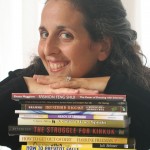
As a nonfiction author, you need to do more than just write a book, you need to know how to edit a book!
I just got off the phone with one of my Bring Your Book to Life® students, who’d asked, “How many times should I edit my manuscript?”
For nonfiction book editing, novice writers often assume an edit or two will do it. The problem is, you can’t look at all editing issues at once. You often need to read the manuscript looking at one or two particular issues and then go through another time for another issue. Here are some editing tips for nonfiction writing that will teach you how to edit a book. I offer 10 ways to focus as you go through each iteration of nonfiction book editing:
The Developmental Edit(s)
1. You’ll want to start with a developmental edit, which looks at the big picture details: structure, tone, missing elements, areas that need more depth, what to cut, clarity and other global issues.
You might well start your first edit by looking at how the material is organized. Ask yourself:
– Does the order make sense?
– Is the information clear?
– Do I need to elaborate anywhere?
– Is some of the material too detailed or too technical for most of my readers? Or is it not technical enough in places?
– Should I move things around?
When you’ve edited your manuscript once through with these questions in mind, pat yourself on the back. You’ve completed your first developmental edit.
2. Next, you may want to read (and edit) for tone, stories and interest level:
– Are there places I can make it more interesting?
– Are there stories that would illustrate my points?
– Is the tone consistent and does it work for my audience?
Once you’ve edited a book for these three areas–tone, stories and interest–you can likely move to a copy edit of the book. How to copy edit a book? I’m glad you asked!
How to Copy Edit a Book
Once you’ve done your developmental edit(s), you may be ready for a copy edit — exploring the book line by line to make the writing clear, entertaining, succinct and polished. In the copy editing phase you also ensure the book is error-free.

4. Another book edit may be about “show vs. tell.”
– Where do I tell readers something without illustrating it?
– How can I make this information come to life with specific–even quirky–details?
– Are there places where statistics or research can back up what I am saying?
5. Another book edit may be for concise writing:
– Are there extra words I can delete: words like “so” and “well” at the beginning of a sentence and words like “really,” “very,” “so” and “that” throughout the manuscript.
– Can I say things in fewer words?
– Does the writing get awkward, clunky or unclear anywhere?
– Do I have any run-on or overly complex sentences?

7. and 8. You may want to do several edits “in your head” and then read aloud for further editing. You’ll notice different things when you read aloud. You can also have someone read aloud to you for another perspective.
Getting Feedback to Edit Your Book
9. It’s always important to have readers from your target audience read and give you feedback. Make sure you give them questions, like, “What do you want more of,” and, “Where do you get bored,” or, “Where did I lose you,” so they know specifically what to look for.
10. I always recommend hiring a professional editor to polish your work. They will catch things you cannot. I have hired editors for my work, because it’s easier to edit someone else’s work than one’s own.
Learn how to edit a book and you will be more successful as an author. Here, we have a minimum of 10 edits. The editing work you do will improve your writing dramatically–and can be the difference between a book your readers recommend to others and one that sits on the shelf.
You may want to bookmark this post and come back to it when you need to edit. Or print a copy and post it on your bulletin board or fridge.
I’d love to hear from readers about some of the iterations you go through when editing (and how you edit your books). I’m sure I left out a few things. How do you edit your work and how many times do you edit? (Feel free to ask questions, too, of course).


 Is this all bad news? No. I’m a firm believer that every challenge is an opportunity waiting for you to see it that way, embrace it, and make the lemonade. My own publishing experience with
Is this all bad news? No. I’m a firm believer that every challenge is an opportunity waiting for you to see it that way, embrace it, and make the lemonade. My own publishing experience with 








